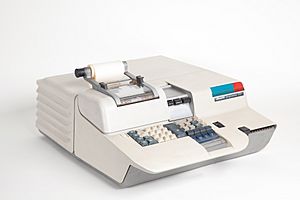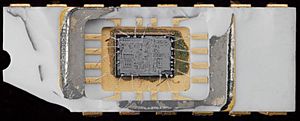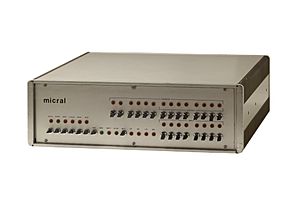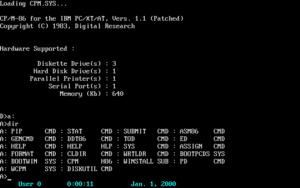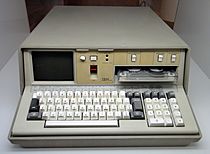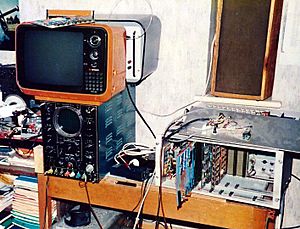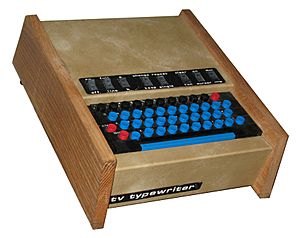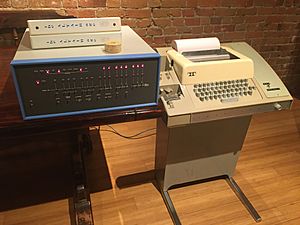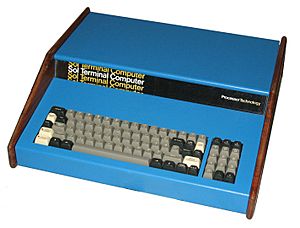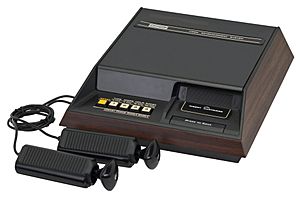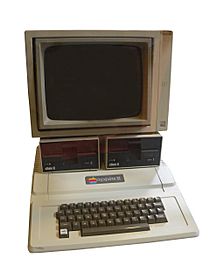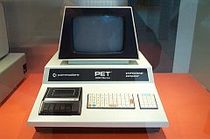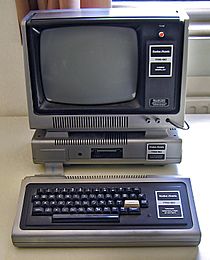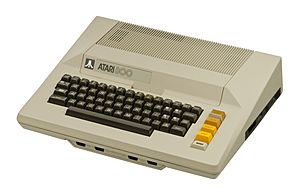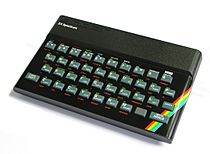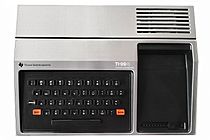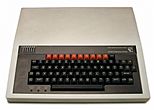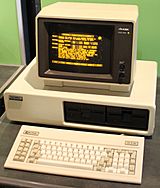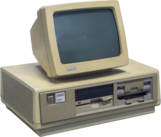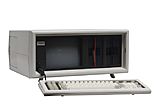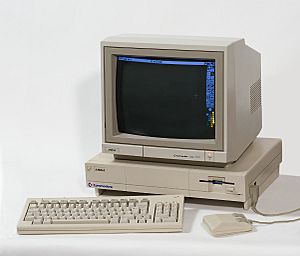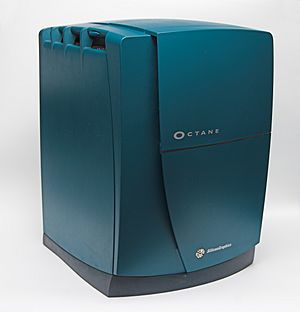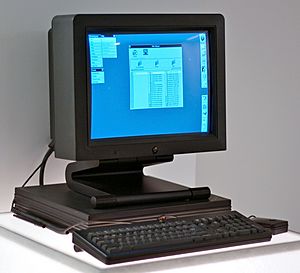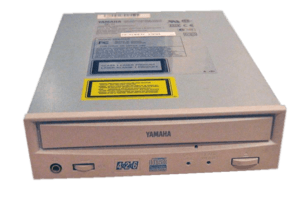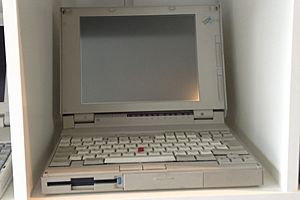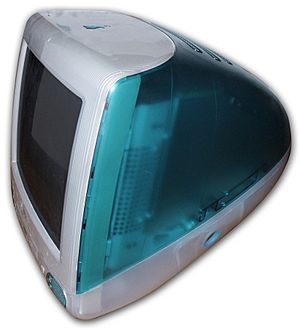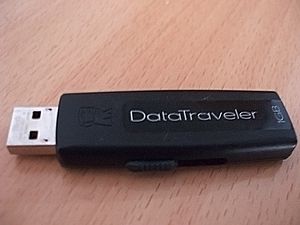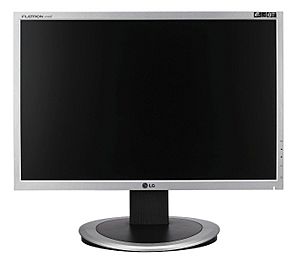History of personal computers facts for kids
The history of personal computers as devices for everyone began in the 1970s. A personal computer is a computer made for one person to use directly. This is different from large mainframe computers, where many people share one big machine. After the microprocessor was invented, personal computers became much cheaper. This made them affordable for regular people. Early personal computers, often called microcomputers, were usually sold as kits for people who liked to build electronics.
Contents
- How Computers Became Personal
- Early Personal Computers Emerge
- LINC: A Computer for One Person
- Olivetti Programma 101: The First Desktop Computer?
- Datapoint 2200: A Modern Look
- Kenbak-1: The First Personal Computer?
- The Single-Chip CPU Revolution
- Micral N: The First Commercial Microcomputer
- The Front Panel: A Look into the Past
- Xerox Alto and Star: The GUI Pioneers
- IBM SCAMP: The First Portable PC?
- CP/M: The First Popular Operating System
- IBM 5100: A Desktop Computer
- Kit Computers: Building Your Own PC
- Altair 8800: The Big Bang of PCs
- Homebrew Computer Club: Where Ideas Were Born
- Sol-20: An Easier-to-Use PC
- BASIC and Microsoft: Making Computers Friendly
- Games Consoles and Personal Computers
- Cassette Tape Storage: Saving Your Work on Tape
- The "1977 Trinity" of Personal Computers
- VisiCalc and the "Killer App"
- The Early 1980s: Home Computers Boom
- The IBM PC: A New Standard
- Apple Lisa and Macintosh: GUI for the Masses
- The Commodore Amiga: Graphics and Multimedia Power
- The Rise of the Graphical User Interface (GUI)
- Workstations: High-Performance PCs
- PC Clones Take Over
- The 1990s: New Technologies and Dominance
- NeXT: Steve Jobs' Next Big Thing
- CD-ROMs Become Standard
- ThinkPad: IBM's Successful Laptops
- Dell's Rise to Power
- Power Macintosh: Apple's New Processors
- IBM Clones Dominate, Apple Recovers
- Writable CDs, MP3s, and File Sharing
- USB and DVD Players
- Hewlett-Packard's Growth
- 64-bit Processors Arrive
- Lenovo Buys IBM's PC Business
- Modern PC Features: Wi-Fi, LCDs, Flash Memory
- Local Area Networks (LANs)
- Cheap 3D Graphics
- 2020s
- Market Size: How Many PCs?
- See also
How Computers Became Personal
From Big Machines to Small Ones
Before the early 1970s, computers were huge and very expensive. Only big companies, universities, or governments could own them. People usually didn't use these machines directly. They would prepare their tasks offline, like punching holes in cards. Then, many tasks would be processed together in a "batch." It could take hours or even days to get results back!
By the mid-1960s, a more interactive way of using computers appeared. This was called "time-sharing." Many people could use different terminals to share one large computer at the same time. This was common in businesses and for science projects.
Some of the first computers that felt "personal" were early minicomputers like the LINC and PDP-8. These were still very large, about the size of a refrigerator, and cost thousands of dollars. But they were much smaller and cheaper than mainframes. This made them available for individual labs and research. The Xerox Alto (1973) was a big step. It had a graphical user interface (GUI), a high-resolution screen, lots of memory, and a mouse.
In 1968, a researcher named Douglas Engelbart showed off amazing new ideas in a famous demonstration. He showed things we use every day now, like e-mail, hypertext (links on the internet), word processing, video conferencing, and the mouse.
The Microprocessor Changes Everything
Early minicomputers used integrated circuits (microchips), which made them smaller and cheaper. But they didn't have a single microprocessor. This meant they were still big and hard to build. When the "computer-on-a-chip" became available, the cost of making computers dropped a lot. All the parts that used to take up many expensive circuit boards were now on one chip. This made it possible to make many computers quickly. Also, new solid-state memory replaced the old, bulky, and power-hungry memory.
The first single-chip microprocessor was the Intel 4004, created in 1971 by Federico Faggin. After this, microprocessor costs fell quickly. In 1974, a magazine called Radio-Electronics showed a computer kit called the Mark-8, based on the Intel 8008 chip. The next year, Popular Electronics magazine featured the Altair 8800 kit, which used the more powerful Intel 8080. The Altair 8800 sold surprisingly well, even though it had very little memory and no software. It was much cheaper than other computer systems at the time.
The very first Microsoft product was a BASIC language program for the Altair. This allowed users to write programs more easily. Before this, you had to enter complex machine code using switches on the computer's front panel.
Early Personal Computers Emerge
LINC: A Computer for One Person
The LINC (Laboratory INstrument Computer) was an early minicomputer made in 1962. It was designed for science research. The LINC was big, but it was one of the first machines made for a single user. It was even somewhat portable! You could take it apart, fit it in a car, and set it up somewhere else without needing a special computer lab.
Olivetti Programma 101: The First Desktop Computer?
The Programma 101, released in 1965 by the Italian company Olivetti, was one of the first programmable calculators that could print. It was the size of a desktop and could run programs. It sold over 44,000 units worldwide. NASA even bought some! It didn't use microchips, only transistors, but it had features like memory, a keyboard, a printer, and a magnetic card reader, much like modern personal computers.
Datapoint 2200: A Modern Look

Released in 1970, the Datapoint 2200 looked a lot like a modern personal computer. It had a screen, a keyboard, and could be programmed. It was a complete system in one case, about the size of a large typewriter. The company that made it, Datapoint, asked Intel to create a single chip for its brain. This chip became the famous Intel 8008 microprocessor.
Kenbak-1: The First Personal Computer?
The Kenbak-1, released in 1971, is considered by the Computer History Museum to be the world's first personal computer. It cost about $750. Only around 40 were ever sold. It had only 256 bytes of memory and used lights and switches for input and output. It was mostly useful for learning how computers work, not for running programs.
The Single-Chip CPU Revolution
In 1970, Federico Faggin joined Intel and helped develop the first commercial microprocessor, the 4-bit Intel 4004, released in 1971. This chip was originally designed for a calculator company. Another chip, the Intel 8008, released in 1972, became the basis for Intel's future computer chips. These single-chip CPUs greatly reduced the cost and size of computers. This made them affordable for individuals.
Other companies soon made their own single-chip CPUs, like the Motorola 6800 (1974) and the MOS Technology 6502 (1975). Many of these chips were used in early personal computers.
Micral N: The First Commercial Microcomputer
The French company R2E released the Micral N in 1973. It was the first commercially available microcomputer to use a single-chip CPU (the Intel 8008). It ran at 500 kHz and had 16 KB of memory. Most Micral N computers were used in businesses for automation, but they could also be used as personal computers.
The Front Panel: A Look into the Past
A front panel with LED lights and switches was common on many 1970s personal computers. You could use it to enter programs, but it was very slow. You would set a memory address using switches, then set the data for that spot, also in binary. The lights showed what was in memory.
These panels were cheap ways to interact with the computer when keyboards and screens were very expensive. They also helped "boot up" the computer. Early machines needed a small program entered manually to tell them how to load a larger program from a disk.
Xerox Alto and Star: The GUI Pioneers
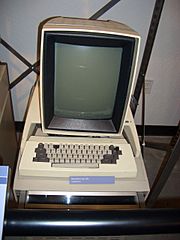
The Xerox Alto, developed in 1973, was the first computer to use a mouse, the desktop metaphor (like files on a desk), and a graphical user interface (GUI). These ideas were first shown by Douglas Engelbart. The Alto was the first computer that looked like a complete personal computer as we know it today.
In 1981, Xerox released the Xerox Star workstation. It was the first commercial system with many features now common in PCs: a bit-mapped display, a window-based GUI, icons, folders, a mouse, Ethernet networking, and e-mail. The Alto and Star inspired the Apple Lisa and Apple Macintosh.
IBM SCAMP: The First Portable PC?
In 1972–1973, IBM developed a portable computer prototype called SCAMP. It had a small screen and a full keyboard. In 1983, PC Magazine called SCAMP a "revolutionary concept" and "the world's first personal computer" because it was the first portable, single-user computer that could run a special programming language called APL.
CP/M: The First Popular Operating System
In the late 1970s, an operating system (OS) was often an extra for personal computers. Programs would load directly from a disk or tape. If you wanted to run a different program, you'd reset the computer and put in a new disk.
Gary Kildall created CP/M in 1974 as an OS for Intel's developer computers. His company, Digital Research, later licensed CP/M to other computer makers. By 1981, over 250,000 copies were sold, and it had many compatible software programs. CP/M helped make software work on many different types of personal computers.
IBM 5100: A Desktop Computer
The IBM 5100 was a desktop computer released in September 1975. It was an improved version of the SCAMP prototype. It was discontinued in 1982, just after the famous IBM PC (IBM 5150) was introduced.
Kit Computers: Building Your Own PC
The invention of the single-chip microprocessor made cheap personal computers possible. In the mid-1970s, many hobbyists wanted to build their own computers. Publications and organizations started offering computer designs as kits. These kits ranged from just circuit diagrams to partially built boards.
Building a kit computer needed soldering skills and knowledge of electronics. This limited who could build them, mostly to enthusiasts. But kits allowed small companies to release machines without needing big factories.
The TV Typewriter (1973) showed how to display typed characters on a home TV. This was a big step towards affordable computer displays. Many kit computers followed, like the Mark-8 (1974), Altair 8800 (1975), and Apple I (1976). By the early 1980s, professionally made personal computers became affordable, and kit computers mostly disappeared.
Altair 8800: The Big Bang of PCs
The Altair 8800, from a company called MITS, is often seen as the computer that started the personal computer industry. It was featured in Popular Electronics magazine in January 1975. It was sold as a kit for only $400. The Altair received thousands of orders in its first month, surprising its creators.
The Altair was hard to use. It didn't come with a keyboard, screen, or even the circuits to control them. You often had to connect it to a teletype terminal, which was expensive. The Altair also had no software in its memory. You had to enter a small program by hand using the front-panel switches just to get it started! Later, systems used bootstrapping code and could load the CP/M operating system from floppy disks.
Homebrew Computer Club: Where Ideas Were Born
The Homebrew Computer Club started in March 1975 for computer hobbyists to share information. Many important people in the early computer industry were members, including Steve Wozniak (who later co-founded Apple) and Adam Osborne (who made early portable computers).
Sol-20: An Easier-to-Use PC
The Altair 8800 was difficult to use. The Sol-20 computer, released in 1976, fixed many of these problems. It put the keyboard, CPU, display card, memory, and ports all into one convenient box. It also came with a cassette tape interface for storage and a monitor. Priced at $2,100, about 12,000 Sol-20s were sold.
BASIC and Microsoft: Making Computers Friendly
The BASIC programming language was created in 1963 to make computers easier for everyone to use. It was simple to learn and didn't need much memory, making it perfect for early microcomputers.
In late 1974, Paul Allen and Bill Gates heard about the Altair 8800. They boldly offered to create a BASIC program for it, even though they didn't have an Altair yet! Allen wrote an Altair emulator (a program that acts like another computer) on a minicomputer. With help from Monte Davidoff, they wrote a BASIC interpreter that fit in just 4 KB of memory. It worked on the real Altair, and MITS agreed to sell it.
Allen and Gates then co-founded Microsoft in 1976 to sell BASIC products. Microsoft BASIC became very popular and was used in many computers of the 1970s and 1980s, including the Apple II and Commodore 64. Many home computers even started with BASIC automatically when you turned them on.
Games Consoles and Personal Computers
Programmable video game consoles appeared around the same time as personal computers. Early consoles like the Magnavox Odyssey (1972) could only play a few built-in games. But with cheaper computer chips, consoles gained new abilities. The Fairchild Channel F (1976) and Atari 2600 (1977) used interchangeable game cartridges.
Games consoles are usually for playing games and don't have keyboards. But their insides are often similar to personal computers. Some later consoles were almost identical to PCs. Peripherals were even made to turn consoles into full personal computers, like the CompuMate for the Atari 2600. Today, the line between consoles and PCs is blurry, with consoles offering features like internet browsing.
Cassette Tape Storage: Saving Your Work on Tape
Floppy disk drives were available, but they were very expensive for early personal computer users. Audio cassette tapes filled the gap. They were cheaper and easier to use than the older paper tape. Many homes already had cassette recorders, which could be connected to computers. Even the first IBM PC had a cassette interface.
Loading software from tape was slow, often taking many minutes for just a few kilobytes of data. Errors were common, meaning you often had to try loading again. Tapes also weren't random access. If you had many files, you had to fast-forward the tape to find the right one. By the late 1980s, disk drives became cheaper, and computer memories grew larger than tapes could hold. So, tapes were used less for primary storage.
The "1977 Trinity" of Personal Computers
By 1976, several companies were trying to make the first truly successful personal computer. Three machines, the Apple II, PET 2001, and TRS-80, all came out in 1977. They became the most popular by late 1978. Byte magazine called their makers—Commodore, Apple, and Tandy—the "1977 Trinity."
Apple II: Color and Expansion
Steve Wozniak designed the Apple I computer. With an order for 100 machines, Woz, Steve Jobs, and Ronald Wayne started Apple Computer.
About 200 Apple I machines sold before the company released the Apple II in 1977. It had color graphics, a full keyboard, and slots for adding more features. It came in a sleek plastic case. The monitor and other parts were sold separately. The Apple II's sales grew a lot after the popular VisiCalc spreadsheet program was released for it in 1979. The Apple II had a long life, selling over 4 million units by 1993.
Commodore PET: All-in-One Design
Chuck Peddle designed the Commodore PET (Personal Electronic Transactor) around his MOS 6502 processor. It had a small built-in screen, keyboard, and cassette drive, all in one metal case. It was announced in June 1977.
Early PET models had a small, calculator-like keyboard. Later versions fixed this with a larger keyboard and moved the cassette drive outside the case. The PET was the least successful of the 1977 Trinity, selling under 1 million units.
TRS-80: Widespread Availability
Tandy Corporation (Radio Shack) introduced the TRS-80 (later called the Model I) in 1977. It combined the computer's main board and keyboard into one unit, with a separate black-and-white monitor. Tandy's many Radio Shack stores meant the computer was widely available and had good support.
The Model I used a Zilog Z80 processor. The basic model had 4 KB of RAM and a built-in BASIC language. It had a full keyboard, was small, and came with a monitor and tape deck. All this cost about half the price of the Apple II. Later, floppy drives and hard drives could be added. Radio Shack sold about 1.5 million Model I's.
VisiCalc and the "Killer App"
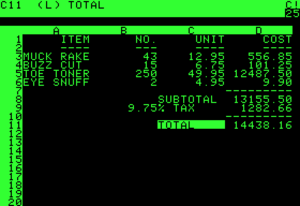
In the 1970s, personal computers were popular with hobbyists, but most people didn't see a reason to own one. This changed in 1979 with VisiCalc, the first spreadsheet program. Before VisiCalc, spreadsheets were done by hand. If you changed one number, you had to recalculate everything manually.
VisiCalc was incredibly popular with businesses, selling 700,000 copies. It was first available only for the Apple II. This made the Apple II a huge success. VisiCalc was called the first "killer app" because it was so useful that it alone made people want to buy a personal computer.
The Early 1980s: Home Computers Boom
By 1980, personal computers were becoming common. A good computer then had 64 KB of memory, a screen, a printer, and could use high-level programming languages. Many companies started making computers, leading to a boom in low-cost "home computers." Millions were sold before a "price war" in the early 1980s caused the market to slow down.
Atari 400/800: Gaming Powerhouses
Atari, Inc. was famous for arcade games and the Atari 2600 game console. They decided to make a new, advanced console, but then changed it into a home computer system. The Atari 400 and 800 were introduced in 1978. They were very tough and easy to use, like game machines.
With special graphics and sound chips, Atari computers were very powerful for their time. About 600,000 were sold by 1981. However, they couldn't compete with the Commodore 64, which came out in 1982.
Sinclair: Affordable British Computers
Sinclair Research Ltd was a British company founded by Clive Sinclair. After a successful kit computer in 1977, Sinclair entered the home computer market in 1980 with the ZX80 for just £99.95. It was the cheapest personal computer in the UK. The ZX81 followed in 1981, selling 1.5 million units.
In 1982, the ZX Spectrum was released. It became Britain's best-selling computer, selling over 5 million units. It was very popular for games, with over 3,500 titles released.
The ZX Spectrum was copied a lot in many countries, especially in Eastern Europe.
The Sinclair QL (1984) was for serious home users and professionals. It used a different processor and had unusual microdrives (tape systems) for storage. It wasn't a commercial success. Sinclair Research faced financial problems and sold its computer rights to Amstrad in 1986.
TI-99/4A: Texas Instruments' Entry
Texas Instruments, a huge chip maker, entered the home computer market with the TI-99/4 in 1979. It was the first home computer with a 16-bit microprocessor. It was updated to the TI-99/4A in 1981. About 2.8 million units were sold, many at very low prices during a price war with Commodore.
VIC-20 and Commodore 64: The Best Sellers
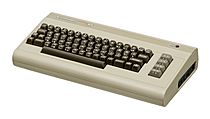
To compete with color computers, Commodore released the color VIC-20 in 1980. It had only 5 KB of memory but was affordable and sold well, becoming the first personal computer to sell 1 million units.
Commodore then released the Commodore 64 in 1982, named for its 64 KB of memory. It was praised for its advanced sound chip (the "SID") and good graphics, making it great for games. Commodore owned the chip maker MOS Technology, which helped them sell the C64 at a very low price. The Commodore 64 is estimated to be the best-selling desktop personal computer model of all time, with 12.5 to 17 million units sold.
BBC Micro: Education in the UK
The BBC wanted a computer for educational TV programs. They chose the Proton from Acorn Computers, which became the BBC Micro (released 1981). It was very successful in UK schools, selling over 1.5 million units.
The BBC Micro had special features like Econet for networking computers in schools. It could also download software from TV signals. It was designed to use multiple processors, and Acorn even developed the ARM processor for it. ARM CPUs are now in most smartphones and tablet computers!
The Commodore Price War
In 1982, computer prices dropped sharply. Commodore's CEO, Jack Tramiel, started a price war, especially against Texas Instruments. He had bought MOS Technology in 1976 to control chip costs. By 1983, the VIC-20 could be bought for as little as $90, and the Commodore 64 for $199. Commodore could still make a profit because they owned their chip suppliers.
This price cutting hurt many competitors. Even Commodore's own finances were strained. Tramiel left Commodore in 1984, but his strategy made the C64 a huge success.
The IBM PC: A New Standard
IBM, one of the world's largest computer companies, entered the personal computer market in August 1981 with the IBM PC. Like the Apple II, it had an open design, allowing other companies to make parts for it. It used the Intel 8088 CPU. The first model could use a cassette for storage, but floppy disks were also an option.
IBM wanted an operating system for the PC. They talked to Digital Research (makers of CP/M) and Microsoft. IBM ended up making a deal with Microsoft for an operating system called 86-DOS, which they renamed PC-DOS. Microsoft kept the right to sell this OS to other companies, which became MS-DOS. This was key to Microsoft's future success. Digital Research later sold their own version, CP/M-86, but IBM sold PC-DOS for much less ($40 vs. $240), making PC-DOS the popular choice.
IBM PC Clones: The Rise of Compatibility
The IBM PC's success made other companies want to copy it. The idea of "cloning" computers wasn't new. The only part of the IBM PC that was truly IBM's secret was its BIOS software. Companies used a method called clean room design to create their own legal versions of the BIOS. With MS-DOS available from Microsoft, other companies could now make IBM PC "clones."
Columbia Data Products released a close clone in 1982. In 1983, Compaq released the Compaq Portable, a portable version of the IBM PC. It sold very well and became a symbol of the IBM clone industry.
Many companies started making clones. Over time, all the parts needed to build an IBM PC became easily available. This meant almost anyone could start a clone business. IBM's prices were undercut, and they lost their leading position in PC development. Microsoft, however, became very powerful, supplying MS-DOS to most clone makers.
In 1984, IBM introduced the IBM Personal Computer/AT (PC/AT) with the faster Intel 80286 chip. But IBM's control of the market weakened. When Intel released the 80386 chip, it first appeared in a Compaq machine, not an IBM. IBM tried to regain control with its PS/2 range in 1987, which used a special Micro Channel bus. But other companies didn't adopt it, sticking to the standard ISA bus.
Apple Lisa and Macintosh: GUI for the Masses

In 1983, Apple Computer released the Apple Lisa, the first mass-market computer with a graphical user interface (GUI). It used a Motorola 68000 processor and had 1 MB of RAM. But the Lisa was slow and very expensive ($10,000), so it didn't sell well.
Learning from the Lisa, Apple launched the Macintosh in 1984 with a famous Super Bowl ad. The Macintosh was the first successful mouse-driven computer with a GUI. It had many of the Lisa's features but cost much less ($2,495). It came with 128 KB of RAM and later 512 KB. To save costs, it didn't have an internal hard drive and used a single 3.5-inch floppy drive. It came with programs like MacPaint (for drawing) and MacWrite (for writing).
The Macintosh became a successful personal computer, especially with the rise of desktop publishing in 1985. Apple partnered with Adobe to offer the LaserWriter printer and Aldus PageMaker software. The Macintosh line was IBM's main competitor until the early 1990s.
The Commodore Amiga: Graphics and Multimedia Power
The Commodore Amiga computers, first released in 1985, were known for their amazing graphics and multimedia abilities. They were very popular for games and video production, especially in Europe, selling around 4.8 million units.
The Amiga was originally planned as a game console. It had special custom chips that helped its CPU handle graphics very fast. One key chip was the "blitter," which could move and combine blocks of data quickly on the screen. This made graphics look very smooth, like the famous "boing ball" demo.
While most PCs of that time showed only 16 colors, the Amiga could show 4096 colors, with up to 64 on screen at once. With a clever trick called "HAM mode," it could even show all 4096 colors at once! This was amazing for the price and allowed photo-realistic images. The Amiga could also mix its graphics with TV video signals, making it useful for video production. It also had a multitasking operating system called Workbench, which allowed several programs to run at once.
The Amiga 1000 was launched in 1985. The more affordable A500 (1987) became very popular. The Amiga line ended when Commodore went bankrupt in 1994.
The Rise of the Graphical User Interface (GUI)
The WIMP (Windows, Icons, Menus, and Pointers) style of GUI, which we use today, was developed by Xerox PARC in the early 1970s. The Xerox Star (1981) was a commercial product with a full GUI, but it cost over $16,000.
Apple's Lisa (1983) was heavily influenced by Xerox's work. The more successful Macintosh (1984) made GUIs more affordable.
In the 1980s, many individual software programs had GUI elements, but they all looked different. There was no standard. The rise of GUI operating systems brought consistency. Programs no longer had to draw their own windows or fonts; the OS provided these tools.
Windows 1.0 was released in 1985, but it wasn't very popular until version 3.0 came out in 1990. After that, Windows became the main GUI operating system for IBM PC clones. Other GUIs included Digital Research's GEM (1985) for the Atari ST and Amstrad PCs, and Commodore's Workbench (1985) for the Amiga.
IBM and Microsoft worked together on an OS called OS/2 for the PS/2 PCs. OS/2 got a GUI in 1988. But Microsoft and IBM later stopped working together, and Microsoft focused on Windows.
Workstations: High-Performance PCs
Workstations are a type of personal computer with higher performance than average business PCs. They are more expensive and used for demanding tasks like scientific computing or graphics. Before 2000, workstations often had unique designs and their own CPUs (like MIPS or SPARC). They usually ran a version of Unix. Companies like Sun Microsystems and Silicon Graphics (SGI) made workstations.
Later, as regular PCs became more powerful, they could handle many of the tasks that only workstations used to do. Today, workstations are often based on standard PC designs but with more powerful parts.
PC Clones Take Over
By the late 1980s, IBM PC clones became much cheaper, selling for under $1000. They started to take over the home computer market, which was previously dominated by companies like Commodore and Atari. Companies like Dell began by selling these low-cost systems directly to customers.
The 1990s: New Technologies and Dominance
NeXT: Steve Jobs' Next Big Thing
In 1990, the NeXTstation workstation went on sale. It was meant to be a new computer for the 1990s and was cheaper than the earlier NeXT Computer. Despite its advanced software, the NeXTstation wasn't a big commercial success, and NeXT stopped making hardware in 1993.
CD-ROMs Become Standard
In the early 1990s, the CD-ROM became a standard for computers. By the mid-1990s, almost all desktop computers had one. CD-ROMs were used for operating systems, applications, and especially multimedia. Many computers started to have built-in stereo speakers for playing CD-quality music.
ThinkPad: IBM's Successful Laptops
IBM introduced its popular ThinkPad laptop range in 1992. These laptops were known for their quality and design. The ThinkPad line continued to be very successful.
Dell's Rise to Power
By the mid-1990s, companies like Amiga, Commodore, and Atari were no longer in the computer market. Dell became very successful by selling low-cost systems directly to customers and businesses. Dell eventually became the world's largest computer manufacturer.
Power Macintosh: Apple's New Processors
In 1994, Apple introduced the Power Macintosh series. These high-end computers used new IBM PowerPC processors, replacing the older Motorola chips. The Macintosh remained popular with creative professionals, especially in graphics and publishing.
IBM Clones Dominate, Apple Recovers
In the 1990s, IBM PC clones became the standard for business and home use. This was helped by Microsoft's Windows 3.0 (1990) and Windows 95 (1995) operating systems. The Macintosh struggled during this time, and by 1996, Apple was almost bankrupt.
In December 1996, Apple bought NeXT, and Steve Jobs returned to Apple in 1997. This brought Apple back to profitability. They released Mac OS 8 and new computers like the PowerMac G3 and the iMac. The iMac was famous for its transparent "Bondi Blue" case and for getting rid of old connections like floppy drives and serial ports in favor of Ethernet and USB. The iMac sold millions of units. In 2001, Mac OS X, a new Mac OS based on NeXT's technology, was released, completing Apple's comeback.
Writable CDs, MP3s, and File Sharing
In the late 1990s, CD-R and CD-RW drives became common. This allowed users to copy and "burn" their own audio CDs. As computers became more powerful, "ripping" CDs into small, compressed MP3 files became popular. peer-to-peer networks like Napster appeared, used mainly for sharing music files.
USB and DVD Players
Since the late 1990s, most personal computers started having USB (Universal Serial Bus) ports. These made it easy to connect devices like digital cameras, printers, and USB flash drives. By the early 21st century, all consumer computers had at least two USB ports. Also, DVD players started appearing on high-end computers in the late 1990s and then on most consumer computers in the early 2000s.
Hewlett-Packard's Growth
In 2002, Hewlett-Packard (HP) bought Compaq. This made HP a major player in desktops, laptops, and servers. HP became the world's largest PC manufacturer for a time.
64-bit Processors Arrive
In 2003, AMD released its first 64-bit desktop processors, Opteron and Athlon 64. IBM also released a 64-bit PowerPC chip for Apple's high-end Power Mac G5 systems. Intel followed in 2004 with 64-bit versions of their Xeon and Pentium 4 chips. 64-bit processors first appeared in high-end systems and then gradually replaced 32-bit processors in consumer computers around 2005.
Lenovo Buys IBM's PC Business
In 2004, IBM sold its PC business to the Chinese computer maker Lenovo Group. This deal was completed in 2005. Lenovo inherited the successful ThinkPad laptop line from IBM.
Modern PC Features: Wi-Fi, LCDs, Flash Memory
In the early 21st century, Wi-Fi became very popular for wireless home networks. Many laptops and desktops now come with wireless cards. Also, LCD monitors replaced older CRT monitors as the most popular choice. LCDs are sharper, brighter, and use less power. The 2000s also saw the rise of multi-core processors (CPUs with multiple "brains") and flash memory. Flash memory, once expensive, is now common, with some laptops like the MacBook Air using it instead of hard drives.
Local Area Networks (LANs)
The invention of local area networks (LANs) like Ethernet in the late 1970s allowed PCs to communicate with each other and share printers. Later, more powerful microprocessor-based servers were developed to connect to LANs, using operating systems like Unix and Microsoft Windows.
Cheap 3D Graphics
Before 2000, high-end 3D graphics were very expensive, often found in Silicon Graphics (SGI) workstations. But then, affordable 3D graphics cards for PCs appeared. Companies like 3dfx (with their Voodoo Graphics cards) made cheap 3D graphics possible for regular PCs. This led to the decline of expensive workstation companies like SGI. NVIDIA later bought 3dfx and became a leader in graphics cards.
2020s
In May 2022, Chinese officials ordered government agencies to replace American-made personal computers with equipment from Chinese companies. This order is expected to remove about 50 million computers, mainly from HP and Dell.
Market Size: How Many PCs?
In 2001, 125 million personal computers were shipped, compared to only 48,000 in 1977. By 2002, over 500 million PCs were in use, and a total of one billion personal computers had been sold worldwide since the mid-1970s. About 75% of these were for work, and 25% for personal or home use.
By June 2008, the number of personal computers in use worldwide reached one billion. Developed countries like the United States and Europe had 58% of these PCs. The number of PCs in use grew by 12% each year.
|
See also
 In Spanish: Historia de las computadoras personales para niños
In Spanish: Historia de las computadoras personales para niños



